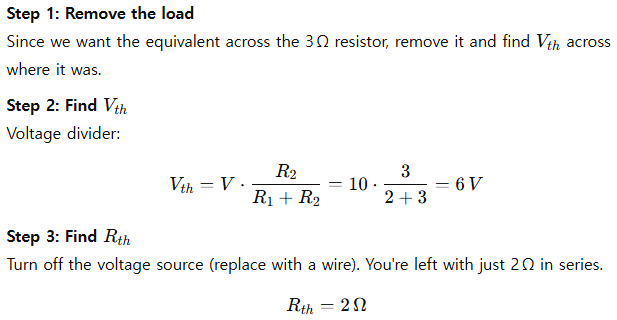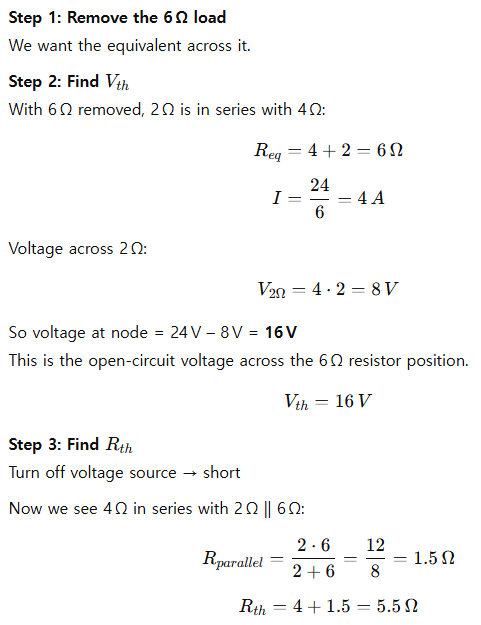Thevenin and Norton Equivalents: A Friendly Guide to Circuit Simplification
When you’re working with circuits, things can get messy fast—lots of resistors, voltage sources, current sources, and connections all over the place. That’s where Thevenin’s and Norton’s Theorems come in. These two powerful tools allow you to replace a complex part of a circuit with something much simpler, making analysis a whole lot easier. And the best part? They’re mathematically equivalent.
In this post, we’ll break it all down step-by-step using easy explanations, formulas, and three example problems ranging from beginner to advanced.
What Are Thevenin and Norton Equivalents?
Both theorems aim to simplify a portion of a circuit to make analysis easier.

And here’s the best part:

You can switch back and forth between Thevenin and Norton forms easily.
Why Use These Theorems?
- Easier analysis: Especially useful when analyzing the effect of changing one load in a complex circuit.
- Circuit design: Helps in designing subsystems or evaluating performance under varying conditions.
- Time-saving: Once you know how to find these equivalents, analyzing circuits becomes lightning fast.
Steps to Find Thevenin Equivalent

Steps to Find Norton Equivalent

Example 1 – Beginner Level
Problem:
Find the Thevenin equivalent of a circuit with a 10 V voltage source in series with a 2 Ω resistor and a 3 Ω resistor connected in series. Terminals A and B are across the 3 Ω resistor.

✅ Thevenin Equivalent: 6 V in series with 2 Ω.
Example 2 – Intermediate Level
Problem:
A circuit has a 12 V voltage source in series with a 4 Ω resistor. There’s also a 2 A current source in parallel with a 6 Ω resistor. Find the Norton equivalent across terminals A and B, located at the open ends of the 6 Ω resistor.

✅ Norton Equivalent: 2 A current source in parallel with 2.4 Ω.
Example 3 – Advanced Level
Problem:
Given this complex circuit:
- 24 V voltage source
- In series with a 4 Ω resistor
- This connects to a node with a 2 Ω and 6 Ω resistor in parallel
- Output terminals are across the 6 Ω resistor.

✅ Thevenin Equivalent: 16 V source in series with 5.5 Ω
Final Thoughts
Thevenin’s and Norton’s theorems are lifesavers in circuit analysis. Once you understand how to find the open-circuit voltage, the short-circuit current, and the equivalent resistance, you can reduce almost any linear circuit to a simple two-component version.
Bonus Tip
Remember the quick conversions:

Whether you’re debugging a breadboard or simplifying a system in simulation, these tools will make your life easier.
Let me know if you want a Python script or calculator for these equivalents—I can generate one for you.
Millman’s Theorem Made Simple with 3 Solved Circuit Problems

Leave a Reply